Themed collection Biomaterials Science Most Popular 2021

Recent advances in near infrared light responsive multi-functional nanostructures for phototheranostic applications
NIR light-based theranostics become very crucial in the field of cancer nanomedicine. This review summarizes the recent advances of NIR light activatable multi-functional materials for cancer phototheranostics.

Biomater. Sci., 2021,9, 5472-5483
https://doi.org/10.1039/D1BM00631B
Recent progress on nanomedicine-induced ferroptosis for cancer therapy
The basics of nanomedicine-based ferroptosis are summarized. The applications and future research directions of nanomedicine for ferroptosis-based anticancer therapy are presented.
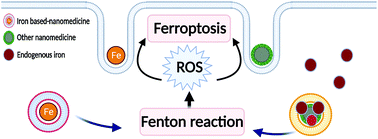
Biomater. Sci., 2021,9, 5092-5115
https://doi.org/10.1039/D1BM00721A
Recent trends on burn wound care: hydrogel dressings and scaffolds
Biomaterial -based therapy in burn wound care and the roles and advantages of hydrogels.
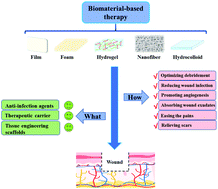
Biomater. Sci., 2021,9, 4523-4540
https://doi.org/10.1039/D1BM00411E
Biomimetic hydrogels designed for cartilage tissue engineering
Cartilage-like hydrogels based on materials like gelatin, chondroitin sulfate, hyaluronic acid and polyethylene glycol are reviewed and contrasted, revealing existing limitations and challenges on biomimetic hydrogels for cartilage regeneration.
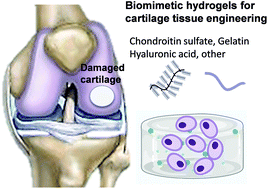
Biomater. Sci., 2021,9, 4246-4259
https://doi.org/10.1039/D0BM01852J
Advances of hydrogel dressings in diabetic wounds
The hydrogel dressings with various functions for diabetic wound treatment.
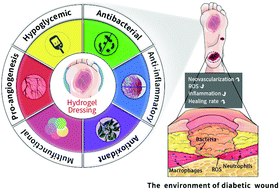
Biomater. Sci., 2021,9, 1530-1546
https://doi.org/10.1039/D0BM01747G
Cell-penetrating peptides (CPPs): an overview of applications for improving the potential of nanotherapeutics
Restricted entry into the cells stands as an ultimate challenge for nanotherapeutics to exhibit their efficacy. Cell penetrating peptides can act as a crucial assistant for overcoming this challenge.
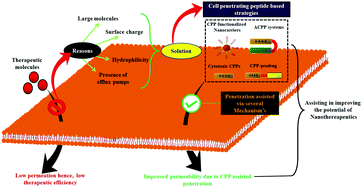
Biomater. Sci., 2021,9, 1153-1188
https://doi.org/10.1039/D0BM01755H
Biofilm inhibition in oral pathogens by nanodiamonds
Nanodiamonds were demonstrated to have great effects on inhibiting biofilm formation as well as disrupting the preformed biofilm in several selected orally and systemically important organisms.
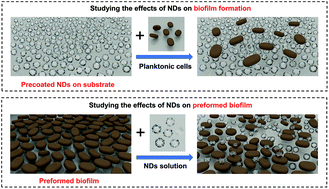
Biomater. Sci., 2021,9, 5127-5135
https://doi.org/10.1039/D1BM00608H
Enhanced anti-tumor efficacy by inhibiting HIF-1α to reprogram TAMs via core-satellite upconverting nanoparticles with curcumin mediated photodynamic therapy
Cur–CSNPs mediated PDT suppress TNBC through the synergistic immunotherapeutic effects by suppressing the expression of HIF-1α to reprogram the pro-tumor TAM2 into the anti-tumor TAM1.
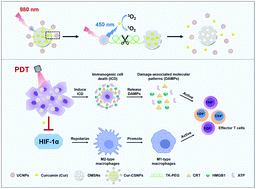
Biomater. Sci., 2021,9, 6403-6415
https://doi.org/10.1039/D1BM00675D
Alginate/chitosan-based hydrogel loaded with gene vectors to deliver polydeoxyribonucleotide for effective wound healing
The prepared polydeoxyribonucleotide (PDRN)-loaded alginate/chitosan-based hydrogel as a “nanocomposite smart material” combines the advantages of gene vectors and hydrogels and promotes the wound healing process.
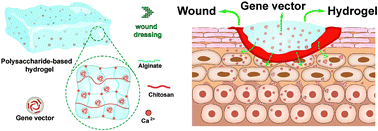
Biomater. Sci., 2021,9, 5533-5541
https://doi.org/10.1039/D1BM00911G
Gene activated scaffolds incorporating star-shaped polypeptide-pDNA nanomedicines accelerate bone tissue regeneration in vivo
Gene activated scaffolds incorporating star-shaped polypeptide-pDNA nanomedicines accelerate bone tissue regeneration in vivo.
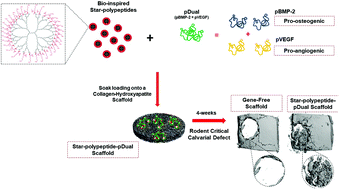
Biomater. Sci., 2021,9, 4984-4999
https://doi.org/10.1039/D1BM00094B
Encapsulating an acid-activatable phthalocyanine–doxorubicin conjugate and the hypoxia-sensitive tirapazamine in polymeric micelles for multimodal cancer therapy
A multicomponent nanodrug based on polymeric micelles has been fabricated and examined for its potential in combined photodynamic therapy, chemotherapy and hypoxia-activated therapy of cancer.
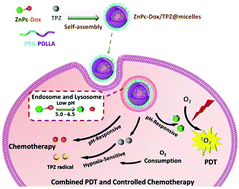
Biomater. Sci., 2021,9, 4936-4951
https://doi.org/10.1039/D1BM00443C
3D bio-printed biphasic scaffolds with dual modification of silk fibroin for the integrated repair of osteochondral defects
Repair of osteochondral defects is still a challenge, especially the regeneration of hyaline cartilage.
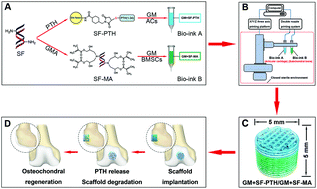
Biomater. Sci., 2021,9, 4891-4903
https://doi.org/10.1039/D1BM00535A
An injectable and biodegradable nano-photothermal DNA hydrogel enhances penetration and efficacy of tumor therapy
Injectable and biodegradable DNA gel nanoparticles with a controllable charge and size as a photothermal therapeutic agent improve the permeability of drugs, reduce drug resistance, and improve the survival rate of mice.
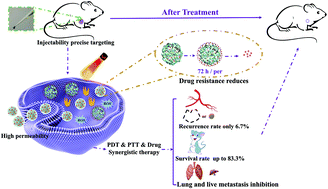
Biomater. Sci., 2021,9, 4904-4921
https://doi.org/10.1039/D1BM00568E
Encapsulating bacteria in alginate-based electrospun nanofibers
We developed GRAS nanofibers for the delivery of viable bacteria into the gut. Model bacterium were encapsulated in alginate-based nanofibers via electrospinning and a bacteria loading of 2.74 × 105 CFU g−1 of mat was achieved.
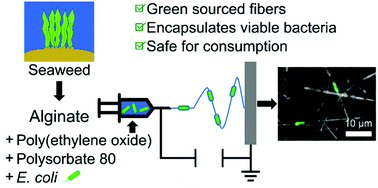
Biomater. Sci., 2021,9, 4364-4373
https://doi.org/10.1039/D0BM02205E
Milk exosomes with enhanced mucus penetrability for oral delivery of siRNA
High-purity milk exosomes were engineered with surface PEGylation and siRNA encapsulation for enhanced oral drug delivery.
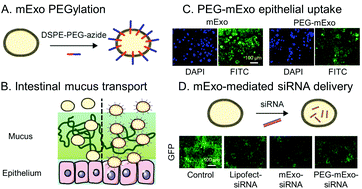
Biomater. Sci., 2021,9, 4260-4277
https://doi.org/10.1039/D0BM01497D
A chondroitin sulfate based injectable hydrogel for delivery of stem cells in cartilage regeneration
An injectable hydrogel system fabricated with functionalised chondroitin sulfate and a hyperbranched multi-functional PEG polymer was developed as a stem cell delivery system for cartilage tissue engineering.

Biomater. Sci., 2021,9, 4139-4148
https://doi.org/10.1039/D1BM00482D
Injectable keratin hydrogels as hemostatic and wound dressing materials
A protein-based injectable hydrogel was prepared in a convenient way and applied for biomedical applications as hemostatic and wound dressing materials.
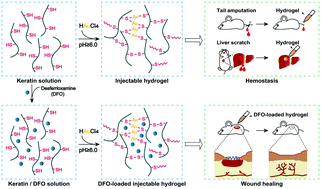
Biomater. Sci., 2021,9, 4169-4177
https://doi.org/10.1039/D1BM00135C
Aligned and electrically conductive 3D collagen scaffolds for skeletal muscle tissue engineering
We introduce a scaffold combining 3D structural alignment and electrical conductivity for skeletal muscle tissue engineering. We show that aligned and conductive scaffolds support myoblast viability, 3D alignment, and early myotube formation.
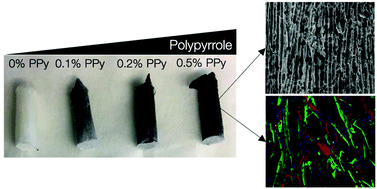
Biomater. Sci., 2021,9, 4040-4053
https://doi.org/10.1039/D1BM00147G
Engineering 3D-printed core–shell hydrogel scaffolds reinforced with hybrid hydroxyapatite/polycaprolactone nanoparticles for in vivo bone regeneration
3D-printed biphasic core/shell hydrogel scaffolds with hybrid bioactive nanoparticles reinforcing core phase possessed controlled swelling, mechanical stiffness and dual-ranged pore size. They provided prominent osteoconductivity, biocompatibility and in-vivo osteogenicity.
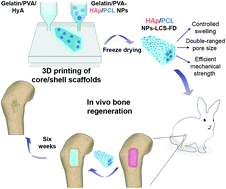
Biomater. Sci., 2021,9, 4019-4039
https://doi.org/10.1039/D1BM00062D
Engineering of biofilms with a glycosylation circuit for biomaterial applications
Glycosylation can be a promising tool for engineering protein-based biomaterials specifically regarding adhesion.

Biomater. Sci., 2021,9, 3650-3661
https://doi.org/10.1039/D0BM02192J
Mechanical properties of cell- and microgel bead-laden oxidized alginate-gelatin hydrogels
Cell containing hydrogels represent a key strategy in tissue engineering. Complex mechanical analyses show that the stiffness significantly drops for high concentrations of cells and microgel-bead fillers in non-fibrous alginate-based hydrogels.
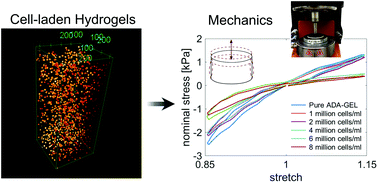
Biomater. Sci., 2021,9, 3051-3068
https://doi.org/10.1039/D0BM02117B
In vivo soft tissue reinforcement with bacterial nanocellulose
The biopolymer bacterial nanocellulose presents attractive mechanical and anti-adherent properties for innovative hernia repair solutions.
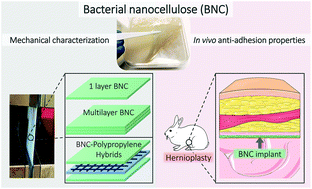
Biomater. Sci., 2021,9, 3040-3050
https://doi.org/10.1039/D1BM00025J
3D bioprinting dermal-like structures using species-specific ulvan
3D cellularized structures revealing dermal-like properties have been successfully printed using bioinks based on the sulfated polysaccharide ulvan from Australian green seaweed.
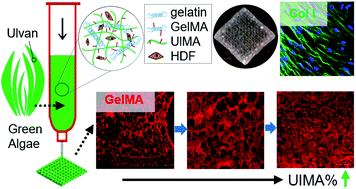
Biomater. Sci., 2021,9, 2424-2438
https://doi.org/10.1039/D0BM01784A
Molecular mobility of polyrotaxane-based biointerfaces alters inflammatory responses and polarization in Kupffer cell lines
Molecular mobility of polyrotaxane-based biointerfaces altered the cellular morphology and gene expression of pro-inflammatory cytokines in the presence of lipopolysaccharide.
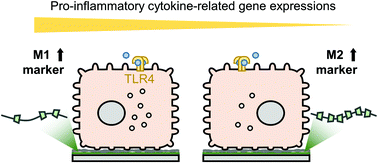
Biomater. Sci., 2021,9, 2271-2278
https://doi.org/10.1039/D0BM02127J
Microenvironmental determinants of organized iPSC-cardiomyocyte tissues on synthetic fibrous matrices
This work provides microenvironmental design parameters to optimize iPSC-cardiomyocyte tissues formed on tunable synthetic matrices that mimic myocardial ECM.

Biomater. Sci., 2021,9, 93-107
https://doi.org/10.1039/D0BM01247E